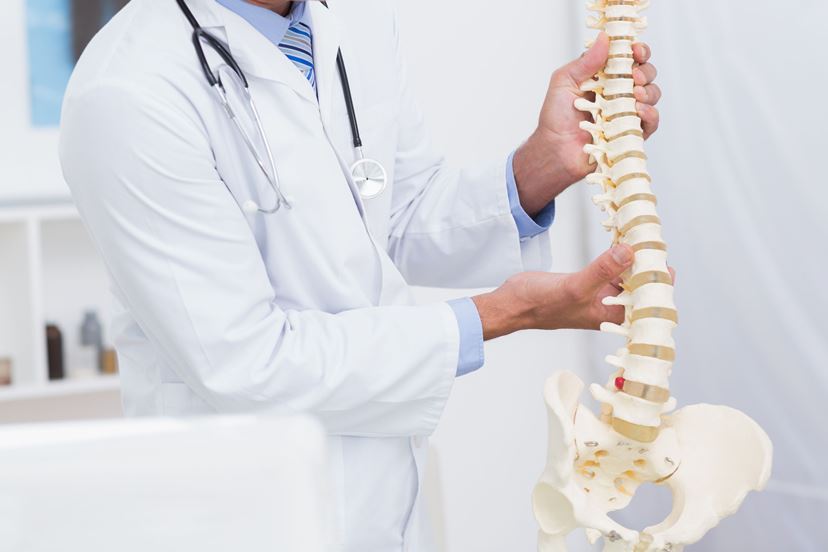If you break your spine, you do not need surgery. It can be treated by injecting bone reinforcing cement.
The World Health Organization ranked osteoporosis as second in importance after cardiovascular disease. Some people call it a “silent threat” because its symptoms occur without prior warning, although you might be able to observe some signs like a decrease in height, gradual hunching of the back and minor aches seemingly along the bones.
Diseases of the spine are important diseases that require attention, because people who have this disease often do not know that they have it and only discover it after their bones have already broken. For the most part, breaks occur at the wrists, hip joints and pelvis, or the spine can even collapse.
Collapsed Spine: Another Suffering from Osteoporosis
Osteoporosis leads to collapsed spine. There can be many causes, namely lack of exercise, inadequate calcium intake, Vitamin D deficiency, alcohol consumption, carbonated beverage consumption, smoking, menopause, surgery to remove the uterus and ovaries and use of certain medications such as chemotherapy drugs, anti-clotting medications, steroid anti-inflammatory drugs, not to mention some diseases such as abnormal ductless gland function, and parathyroid diseases that can all contribute to faster breakdown of bone tissue to the point that collapse or breakage of the spine can happen after a minor fall or when performing daily activities. The disease causes enormous suffering stemming from immense pain to the point that normal, peaceful living is impossible.
MRI is the most accurate way to diagnosis spinal conditions.
As a frequently encountered problem, many patients and relatives ask why back pain occurs and why the pain is so severe that it causes enormous suffering and does not disappear even after taking medications or receiving injections. Accordingly, the best method to help diagnose whether or not the spine has broken or collapsed, and, if it has occurred, whether the break is new or has occurred for many years, is to undergo the MRI test on the spine. This allows doctors to clearly see the disease’s pathology to draw conclusions, make a diagnosis and plan treatment most accurately and fully corresponding to the cause.
The following are ways to treat elderly patients with a broken spine:
1.Treatment by wearing a device or armored vest to support the back (orthosis) at all times by undergoing the treatment continuously for 3-6 months, depending on the severity of the breakage. The treatment is effective in patients who cooperate in wearing their bone support devices and cases where the collapse or deformity is minor. Accordingly, the correct way to wear the device is to wear it before getting up, sitting up or walking. If you get up and sit or stand before wearing, the collapse can worsen to the point that your body weight can put pressure on the broken parts, thus increasing hunching of the back.
2. Surgery by using metal to brace the bones. A surgeon can correct hunched backs to return to be near to normal or to reinforce their structure. The benefit of this is that surgeons can correct hunched backs to be close to normal while allowing patients to recover from pain caused by broken bones, since the bones are structurally supported by metal. The downside is that these patients have to undergo surgery and an extensive amount of metal must be placed at least 10-12 screws, with inhaling anesthesia. As a result, there is risk in elderly patients who often have co-morbidities, which make some people to dislike this treatment.
Bone Cement Injection… A New Technique to Treat Spinal Collapse without Surgery
This technique involves the injection of a bone replacement substance at the site of breakage using the porous gaps in the bones, especially of the spine. This method is particularly interesting because it does not require surgery, nor inhaling any anesthetic. A localized anesthetic can be used with an injection type general anesthesia, and the treatment duration is short at just 20-30 minutes. Furthermore, this medical cement is accepted to be harmless to the body and is not rejected by the body.
After treatment, only a scar sized about 2-3 millimeters is left, from the needle that penetrated the skin to reach the broken bones. The patient should remain hospitalized for monitoring for about 1 night, and their symptoms will improve significantly afterwards. However, this treatment has the limitation that it is often not performed in younger patients, because it is more suitable for patients older than 60 years who suffer from a broken spine.
In any case, if a bone has already been broken once, it is extremely necessary to prevent another break at the same site or new breaks at other sites. As a result, patients should eat food from all 5 food groups and receive calcium supplements, vitamins and bone-reinforcing drugs, in addition to exercising and avoiding risk factors.
Importantly, women older than 50 years should receive bone density check-ups and blood Vitamin D tests by at least once annually. If the results are good, we will recommend going for a check-up every 2-3 years, but if there are abnormalities, you will be able to receive early treatment.
You may find our specialist here at Orthopedic Institute, Phyathai 2 Hospital
Phyathai 2 Hospital
International Correspondence Center
Tel: +66-2617-2444 ext. 2020 or 2047 E mail: onestop@phyathai.com
 @pt2_inter
@pt2_inter
 Phyathai 2 Cambodia
Phyathai 2 Cambodia
 PT2Chinese
PT2Chinese
 phyathai2inter
phyathai2inter
